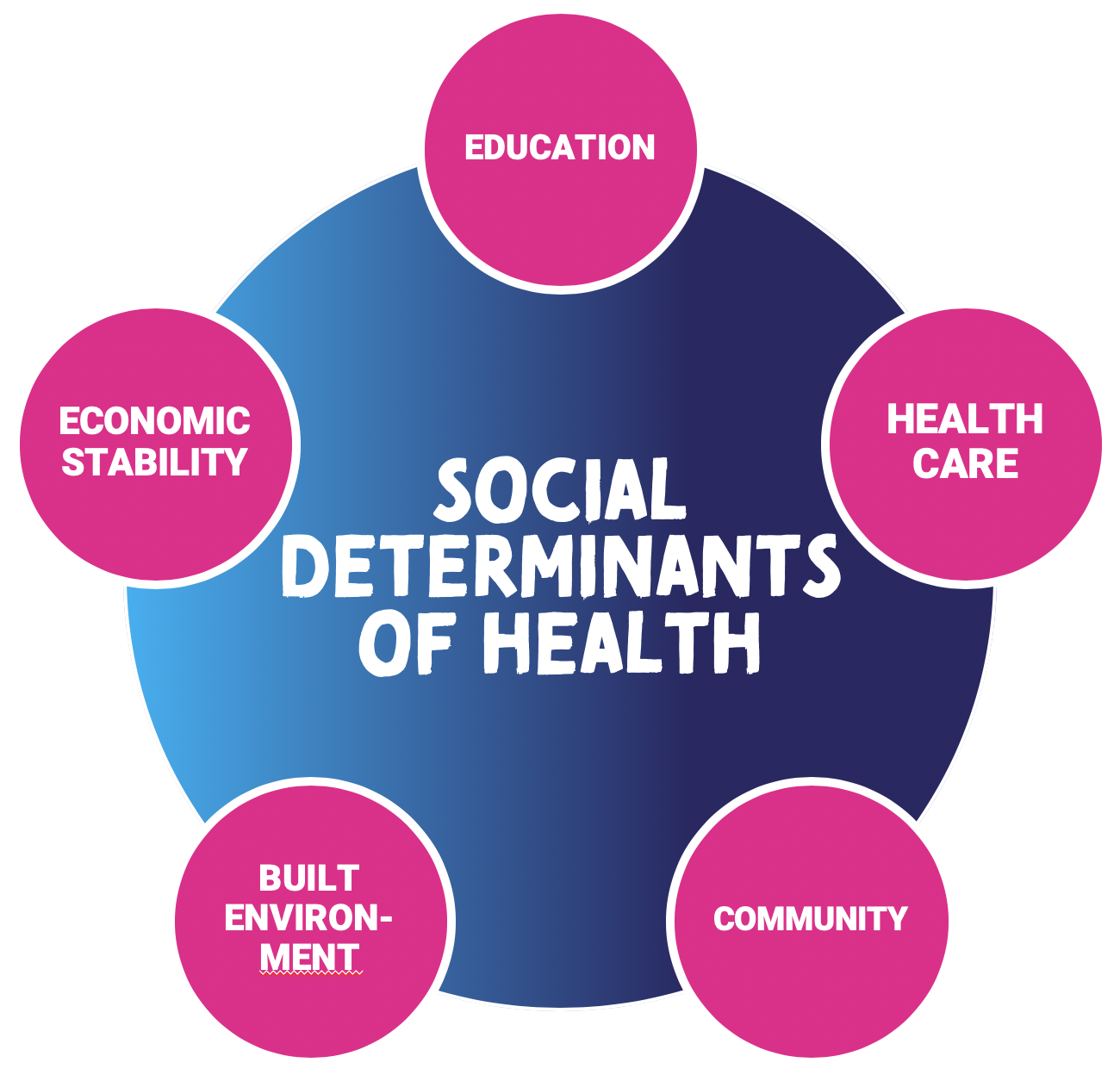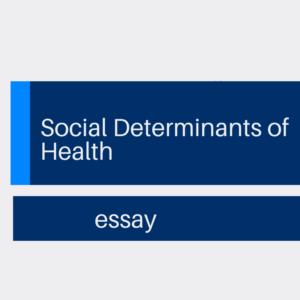Social Determinants of Health Essays help

Social Determinants of Health Essay help
The social determinants of health are factors that affect the health of individuals. These factors include environmental and social conditions. They include things such as dietary guidelines, racial and ethnic differences, and economic status. Social Determinants of Health Essays are common in nursing school and we are here to help you with that.
Environmental conditions
Environmental conditions as determinants of health is an important topic for health care professionals. These factors contribute to the risk of chronic illnesses, as well as to adverse health events.
The three largest environmental drivers of health are air pollution, extreme heat, and water quality. Many challenges remain in preventing and controlling these hazards. However, CDC’s Tracking Network has been created to track these risks and to connect environmental and public health data. It offers resources for health care providers and the public.
The Environmental Public Health Tracking Network combines health and environmental data, including environmental exposures, to provide a picture of the overall health of populations. The Network uses various sources to gather data, including vital statistics, national surveys, and public reports.
Environmental monitoring is a continuous process, requiring periodic surveillance and data collection. This information is used to determine pollutant levels and to estimate how pollutants may affect health.
There is strong evidence linking certain pollutants to all-cause mortality and other adverse health effects. Studies have found causal associations between pollutants and cerebrovascular disease, lower respiratory tract infections, cancer, and chronic obstructive pulmonary disease.
One study has estimated that the US dies at least 103,000 per year due to ambient air pollution. Another has attributed 25,000 to indoor air pollution. In the United Arab Emirates, a study estimates that mold causes 12% of adult asthma and 8.6% of children’s asthma.
Traditionally, public health work focused on local hazards. Today, however, more research is being done to understand global hazards. Global hazards include climate change and stratospheric ozone depletion.
Some studies have suggested that environmental conditions are also determinants of genetics. Research has also shown that stressful situations can increase the risk of certain diseases.
Social conditions
Social conditions can affect health in a variety of ways. For example, a person’s diet can play a role in their health. However, the effects of any given factor are dependent on the presence of other factors. In other words, it is not enough to just provide access to a healthy diet.
Similarly, a person’s access to a healthy environment can be beneficial. An improved air quality, for instance, may reduce exposure to environmental toxins. Likewise, policies to support improved sanitation and water availability may improve health.
On the other hand, a person’s adoption of a health-threatening behavior is often influenced by a host of factors, including stress. It is also important to note that not every individual exposed to adversity develops disease.
Knowledge of the social and economic factors that contribute to a person’s health is important to understand. These include income and educational levels. They are the foundation for many other factors, such as employment and social support networks.
Understanding the role of social factors in a person’s health is an important requisite for reducing health inequities. A community partnership is the best way to achieve this. To ensure effective implementation, community organizations should be involved from the beginning.
A few examples of a social determinant that relates to health are education, employment, income, and housing. While these factors have the most obvious impact on health, there is a wide range of other factors that are also significant.
The CDC has released a report on how to address the social determinants of health. These recommendations include steps to increase the efficiency of social determinant efforts, such as minimizing duplication of effort and developing community capacity. Specifically, the report describes seven phases of addressing the determinants of health at the community level.

Dietary guidelines
Dietary guidelines are an important tool in the hand of policy makers. They are also a valuable tool for health professionals and other members of the food and nutrition community. However, dietary guidelines do not always deliver on their promises.
The development of dietary guidelines is a complex process that involves many facets. This includes collaboration between government, industry, and non-governmental organizations. It involves scientific underpinnings as well as public awareness.
One of the key challenges is implementing dietary changes in the real world. There are numerous influences that affect a person’s eating habits, from cultural and social influences to economics and venue. To achieve the best possible outcomes, it’s important to find the most effective strategies and approaches for each individual and sector.
Although the process of creating and implementing dietary guidelines is complex, there are some steps that can be taken to make the task easier. Among these are providing a consistent message on food packages. Educating consumers about the nutritional content of their foods is another good way to promote healthy eating.
Nutritional guidance is intended to provide the most reliable recommendations. However, this doesn’t mean that the guidelines are independent. Rather, they are designed to reflect the current state of science and to be a useful guide to nutrition education and promotion.
For example, the Dietary Guidelines for Americans (DGA) is a comprehensive source of nutrition advice for both consumers and professionals. These guidelines are updated every five years. Using a determinants of health approach, they take into account local, national, and global factors that can impact health.
In addition to the scientific underpinnings of the DGA, a number of non-government players are involved in creating and implementing dietary guidelines. This includes supermarket interventions, for example, shop tours and point-of-purchase counseling.
Racism
Racism has a profound effect on health. It has been found to be associated with a variety of physical and mental health conditions.
Racial discrimination has long been known to cause inequities in health and wellbeing. These racial disparities are exacerbated by structural racism. Structural racism is a form of racial inequality that creates inequalities in resources, power, and opportunities. In addition to limiting access to health care, these inequities also reduce overall health.
Recent reviews have focused on the impact of racial discrimination on health. However, these reviews have not examined the magnitude of the association between racism and health. Instead, the effect of racial discrimination has been measured by correlation coefficients, P values, odds ratios, and other measures.
The magnitude of a relationship between racism and health depends on the subgroups studied and the outcome measures used. Studies that examine the effect of racial discrimination on physical and mental health have demonstrated that discrimination leads to an increase in certain types of psychological stress.
Systemic racism manifests as unequal resource allocation, legislative policies, and hiring practices. Moreover, interpersonal racism can lead to health problems by fostering psychological damage and reinforcing negative stereotypes.
Efforts to combat racism must include education on the impact of structural racism on health. AHA scientists are conducting research to determine the mechanisms that underlie this relationship.
The National Institutes of Health has announced that it will fund researchers to study issues related to racism. This research will be conducted in conjunction with the American Heart Association (AHA). They will be updating their scientific statements to include structural racism.
There have been several meta-analyses of the effects of racism on health. Some of these reviews examined discrimination more broadly and had limitations on their scope.
Inequity
Health inequity refers to differences in health status and conditions. Longstanding health inequities can be prevented through the creation of policies to address social determinants of health.
Social determinants of health are the social, economic, environmental, and psychosocial factors that influence the health of individuals. Some of the factors include healthy food, access to education, housing, jobs, and social support networks. While there is no single causal relationship between health and these factors, it is important to address these factors if we are to improve overall health.
Several initiatives have been launched to address these determinants. They are often part of a larger system shift towards a “whole-person” approach to care delivery. In addition, there is a growing interest in addressing social determinants in the non-health sectors.
There are many reasons for health inequity. It can be caused by socioeconomic status, discrimination, and a lack of affordable access to services. One key to improving health is a healthy environment, which can be strengthened through positive policies.
Family physicians are a vital contributor to reducing health inequities. They work to raise the profile of these issues and provide high quality medical care to underserved populations.
The Affordable Care Act provided the opportunity to expand coverage for millions of Americans. However, this alone is not enough. To truly increase access to health care, health administrators and policymakers must take steps to reduce health inequities.
The American Academy of Family Physicians has called upon government to create policies to address social determinants of health. These policies can be enforced at the federal level or by communities.
A new resource, Promoting Health Equity, is available to help communities address social determinants of health. This website is a collection of resources including videos, pictures, documents, and audio.


